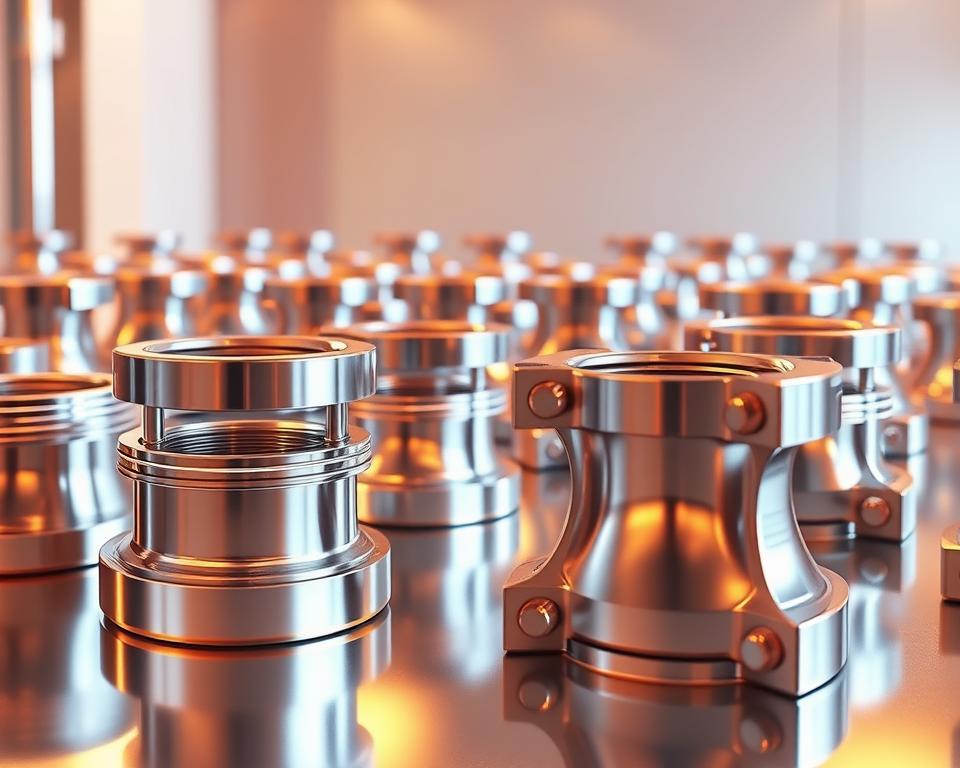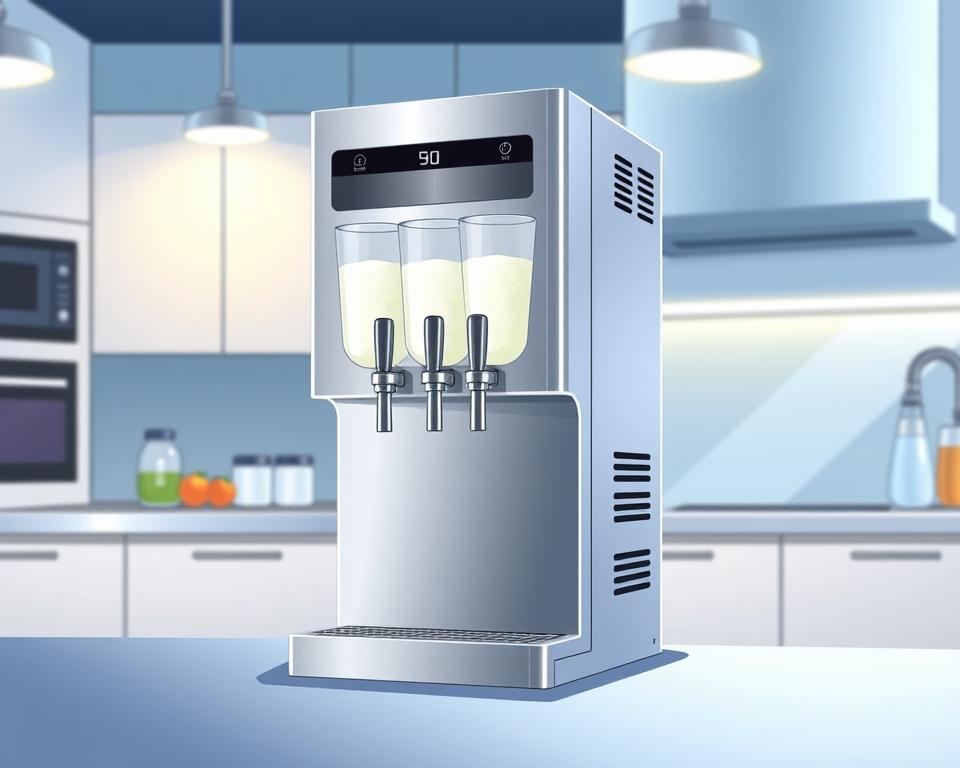Silicone Structural Sealant Guide for Constructors
Are you aware that nearly 75% of building experts rely on silicone structural sealants for efficient waterproof construction? These high-performance adhesives are not just a trend; they have become indispensable in contemporary building ventures for their exceptional longevity and resilience against weather elements.
Silicone framework sealants provide strong adhesion and increased suitability with a variety of substances. This makes them the go-to option for constructors concentrated on durability and lower maintenance. Their effectiveness in multiple uses, particularly in framework connections and window sealing, shows how these construction adhesives have a crucial role in improving the performance and security of structures.
Introduction to Silicone Structural Sealants
Silicone structural adhesives are a significant advancement in building and construction. They provide strong bonding and elasticity, making them vital in modern architecture. Unlike traditional adhesives, silicone adhesives boast enduring elasticity. This is important in regions prone to movement or expansion.
The development of framework window adhesives has been a game-changer. These sealants are essential for multiple uses, both interior and exterior buildings. They guarantee integrity in varied building projects. With a background spanning decades, glass adhesive are now essential for security and aesthetics in building design.
Constructors and designers rely on silicone sealants for their performance and versatility. They are used in glazing and sealing exterior connections, providing a reliable option for contemporary construction. As we delve into the categories and characteristics of silicone sealants, it’s clear they play a vital function in building practices.
Varieties of Silicone Adhesives
For builders and developers, it’s important to understand the various categories of silicone sealants. The primary categories are neutral rubber adhesive and reactive silicone sealant. Each type has unique features that impact their application, making it crucial to choose the right one for a venture.
Neutral Rubber Adhesive
Non-reactive silicone sealant is the go-to for sensitive applications. It doesn’t emit solvents that could cause corrosion or damaging chemical reactions with different surfaces. This makes it perfect for framework window sealing, especially in joining glass. Builders often select this sealant for dealing with metals and other sensitive substances.
Acid Rubber Adhesive
Reactive rubber adhesive is perfect for projects with non-sensitive materials. It dries quickly, making it excellent for sealing gaps promptly. It’s utilized in both residential and commercial settings where speed and durability matter. Contractors value its versatility, but caution is needed when using it with materials that react badly to acids.
Important Properties of Silicone Structural Adhesive
Silicone framework sealants excel in building due to their notable attributes. They offer high bonding, strong weather resistance, and unmatched durability. These attributes are crucial for constructors seeking a dependable sealant for various applications.
Adhesion and Compatibility
High-quality structural adhesives bond well to materials like panes, alloys, and concrete. This versatility is vital for projects needing a robust connection across various materials. Builders value this adhesive for its capacity to ensure a strong bond, improving the structure’s integrity.
Weather Resistance
Designed to withstand severe conditions, weather-resistant silicone sealant resists to ultraviolet light, moisture, and harsh temperatures. Such resilience ensures it keeps performing effectively over time. It’s an ideal option for ventures subjected to the weather or those in areas with changing conditions.
Longevity and Efficiency
One of silicone sealants’ key qualities is their longevity. They are engineered to last, even with structural movement. This flexibility and longevity make them a top choice for ventures requiring to adapt and endure, guaranteeing consistent performance over their duration.
| Property | Description | Advantages |
|---|---|---|
| Adhesion | High adhesive capability to multiple materials | Ensures structural integrity and dependability |
| Weatherproofing | Defense from ultraviolet light, humidity, and weather fluctuations | Improves longevity and avoids seal failure |
| Durability | Capacity to endure building shifts | Provides a long-lasting and effective bond |
Applications for Rubber Sealant in Building
Silicone adhesives are crucial in construction, especially in structural glazing applications. They join building components like glass panes, exteriors, and curtain walls, guaranteeing both strength and aesthetics. A top-quality rubber adhesive not only forms a strong connection but also flexes with building materials, maintaining the bond through natural shifts.
Silicone products are also important in forming waterproof shields, improving structures’ resilience against harsh weather. This is crucial for the durability and safety of buildings. Here are some notable fields of use:
- Joining different substances, such as panes to alloys or concrete.
- Creating seals in window systems, enhancing energy performance.
- Offering waterproofing options for roofs and siding uses.
- Enabling expansion and shrinkage in moving buildings.
- Ensuring visual appearance consistency in various building designs.
The unique combination of elasticity, longevity, and weather resistance makes high-performance silicone sealants perfect for contemporary construction needs. As constructors search for innovative solutions, silicone adhesive is more utilized, resulting in more secure and better building methods.
| Use | Explanation | Advantages |
|---|---|---|
| Framework Window Sealing | Bonding glass panels to framing systems | Improved aesthetics, strong connection, flexible shifts |
| Waterproofing | Protecting roofing and siding from humidity | Water resistance, improved durability, energy efficiency |
| Joining Different Substances | Bonding materials like metal and panes | Versatility in substance suitability, strong adhesion |
How to Choose the Appropriate Silicone Structural Sealant
Choosing the right rubber framework adhesive demands a thorough examination of material kinds and weather factors. It’s crucial to understand how various materials interact with different adhesives. This knowledge is essential for choosing a professional-grade silicone sealant that can endure particular pressures.
Factors for Various Substrates
When selecting rubber adhesive, various materials demand unique approaches. Below is a chart outlining common substrates and their corresponding considerations:
| Substrate Material | Recommended Sealant Type | Key Considerations |
|---|---|---|
| Concrete | Top-quality rubber adhesive | Adhesion properties and drying period |
| Glass | Non-reactive rubber adhesive | High transparency and ultraviolet protection |
| Alloys | Rubber adhesive | Corrosion resistance and elasticity |
| Timber | Mixed rubber adhesive | Moisture resistance and movement capability |
Environmental Conditions
The surroundings significantly affects the selection of adhesive. Conditions such as extreme weather, moisture conditions, and chemical contact are important. An perfect sealant should maintain efficiency across changing situations.
- Heat Levels: Ensure the sealant can withstand the specific heat levels.
- Moisture: Select sealants resistant to humidity for humid environments.
- Chemical Exposure: If the region will be subjected to chemicals, choose a adhesive with appropriate protection.
For the best results, always consult manufacturer specifications and perform compatibility testing with substrates. This method minimizes danger and guarantees longevity for all ventures involving a silicone structural sealant.
Correct Application Methods
Perfecting the art of acid silicone sealant application is essential for its effectiveness. The outcome depends on the thoroughness of surface preparation and the application methods used. These initial steps create the foundation for a successful adhesive installation.
Surface Preparation
Substrate cleaning is the foundation of effective silicone structural sealant application. It’s critical that substrates are thoroughly cleaned, dried, and free of any impurities. The important steps for substrate cleaning are:
- Cleaning: Dust, grease, and remnants must be removed. The selection of detergent should match the substrate type.
- Preparing: A primer may be necessary, based on the adhesive and substrate, to strengthen adhesion.
- Drying: Complete dryness of the surface is crucial before using the adhesive, as humidity can undermine its efficiency.
Sealant Application Methods
Choosing for the correct sealant application methods is critical for superior results. The method employed should match with the venture’s requirements and the desired result. Common methods include:
- Sealing Tool: This technique is favored for its accuracy in controlling sealant width.
- Trowel Application: Ideal for bigger areas or when a thick sealant layer is needed.
- Backer Rod Installation: Crucial in thicker gaps, this technique controls adhesive thickness and improves adhesion.
Adherence to these techniques is important to prevent air entrapment, which can reduce from the bond’s strength. Diligence in both substrate cleaning and application guarantees a bond that is both durable and effective, supporting the lasting achievement of construction endeavors.
Verification in Sealant Usage
Guaranteeing the standard of sealant usage is vital for achieving efficiency goals. Efficient verification techniques help constructors and developers verify the cohesion of their work. This involves detailed sealant adhesion testing under various conditions to see if the adhesive bonds effectively with the surfaces it touches.
Testing for Adhesion
Verifying sealant adhesion is essential for evaluating rubber adhesives. Methods used involve:
- Pull-off tests – a common method to measure the adhesive capacity between the sealant and the substrate.
- Peel tests – useful for checking how well the sealant sticks over time.
- Real-world assessments – practical checks that ensure the sealant works as intended in actual situations.
These techniques, included in the quality assurance process, build trust in the adhesive’s bonding capacity and its fit for a project.
Documentation and Warranty Considerations
Recording is essential in guaranteeing adhesive standard. It includes noting the materials used, how they were applied, and the environment at the time of installation. Thorough notes help in future maintenance and safeguard all parties. Guarantee factors are important, offering coverage against failures and defining the responsibilities of producers and applicators. Adhering to standard documentation practices reduces dangers from sealants that don’t achieve standards.
| Documentation Type | Explanation |
|---|---|
| Application Notes | Information on the installation method, including environment and techniques employed. |
| Material Safety Data Sheets (MSDS) | Info on the safety and handling of adhesives employed in the project. |
| Guarantee Papers | Conditions and conditions defining protection against defects and failures. |
Keeping accurate information throughout the procedure is crucial for adhesive standard. Effective testing and careful recording ensure robust warranty considerations, resulting in successful outcomes.
Common Mistakes to Prevent with Rubber Adhesives
Many constructors encounter problems with rubber adhesives that can severely affect their ventures. It’s essential to fix these mistakes for a enduring and efficient seal. Here are some common issues to be aware of:
- Improper Surface Preparation: Failing to wash and readying surfaces properly can lead in poor bonding. Consistently remove dust, grease, or contaminants before applying the adhesive.
- Selecting the Incorrect Adhesive: Various projects require specific sealants. Using an acid silicone in a place where a non-reactive adhesive is required can lead subpar efficiency.
- Incorrect Adhesive Methods: Applying sealant unevenly can create weak spots. A steady hand and even pressure during application are crucial for a solid bond.
- Ignoring Environmental Conditions: Adhesives work best within certain heat and humidity levels. Applying them in severe conditions can reduce their efficiency.
- Overlooking Drying Periods: Hurrying the curing period can result in partial bonding. Always follow the suggested drying periods for the best results.
Identifying and addressing these silicone sealant errors ensures improved efficiency and longevity in building ventures. Adopting these steps can result in successful installations and reduce the need for future repairs.
| Error | Impact | Solution |
|---|---|---|
| Incorrect Substrate Cleaning | Poor adhesion resulting in adhesive breakdown | Meticulously wash and prepare substrates prior to application |
| Selecting the Incorrect Adhesive | Poor efficiency in particular situations | Choose a sealant suitable with the use |
| Poor Application Techniques | Vulnerable areas in the seal, chance of breaks | Adopt steady and uniform adhesive techniques |
| Overlooking Surrounding Factors | Compromised seal integrity | Check temperature and moisture before use |
| Overlooking Drying Periods | Chance of early breaks | Follow the suggested drying periods |
Upkeep of Silicone Structural Sealants
Guaranteeing the durability and performance of rubber framework adhesives is essential. Routine maintenance can avoid mold growth, discoloration, and seal failure. This proactive method not only maintains the structure’s appearance but also prolongs the sealant’s duration.
Key methods for effective maintenance include:
- Regular Inspections: Inspect for indications of wear, breaks, or swelling every few periods.
- Hygiene: Keep the region around the sealants tidy. Debris accumulation can cause fungus and discoloration.
- Reapplication: Prompt new usage is essential when sealants show signs of degradation to maintain cohesion.
- Surrounding Factors: Be aware of changing weather conditions and their impact on bond efficiency.
Implementing these measures can significantly lower possible issues, improving the structural integrity of buildings employing silicone-based materials. This dedication to upkeep guarantees a reliable and effective sealant for buildings.
Environmental Impact of Silicone Sealants
The environmental impact of adhesives, especially rubber adhesives, has seen a increase in attention. This heightened attention originates from the need to match building practices with eco-friendliness. The manufacture of these adhesives often involves volatile organic compounds (VOCs), which pollute the atmosphere and impact indoor air quality.
As the building industry moves towards sustainable materials, manufacturers are creating in rubber adhesives. They seek to lower VOC outputs and create green formulas. These changes not only reduce on pollutants but also match with sustainable construction goals.
Waste management of silicone sealants poses ecological challenges. Unlike some alternatives, silicone is difficult to recycle, leading in more landfill waste. Consumers and builders should seek out products marked as environmentally responsible or supported by reuse programs.
| Factor | Conventional Silicone Sealants | Eco-Friendly Rubber Adhesives |
|---|---|---|
| VOCs Emission | Higher emissions | Lower emissions |
| Waste Management | Difficult to recycle | Made for better reuse |
| Formulation | Standard chemical components | Green ingredients |
| Compliance with Standards | Varies widely | Meets green building standards |
Looking ahead, constructors and architects should favor silicone sealants with reduced environmental impacts. Selecting these sustainable options can greatly reduce damage to our planet. At the same time, they still provide the durability and performance required in building ventures.
Contrasting Silicone Sealants to Other Sealants
Comprehending the variations between sealing agents and other sealant types is essential for creating informed choices in construction. This overview will concentrate on two primary contrasts: rubber vs. plastic adhesives and silicone vs. polyurethane sealants. Each serves distinct roles in sealing applications, influenced heavily by their properties and use cases.
Rubber vs. Plastic Adhesives
Rubber adhesives shine in elasticity and weatherproofing, making them perfect for applications exposed to severe environmental conditions. Plastic adhesives, while simpler to paint and usually lower in price, may not offer the same degree of longevity over time. Key distinctions are:
- Weatherproofing: Silicone performs better in extreme temperatures and moisture.
- Flexibility: Silicone can stretch and contract with building shifts, while acrylic is susceptible to breaking.
- Bonding: Silicone bonds strongly to a variety of substrates, whereas plastic can be restricted.
Silicone vs. Polyurethane Sealants
In the comparison of silicone vs. polyurethane sealants, both provide great bonding. Synthetic adhesives may possess a stronger connection to many substrates but often are lacking when exposed to extreme conditions. Important factors to consider are:
- Adhesion Strength: Polyurethane can adhere extremely effectively on different substrates.
- Weather Performance: Silicone is more likely to outperform synthetic in harsh weather situations.
- Use: Synthetic usually requires more careful mixing and application than silicone.
Each kind of adhesive has its advantages and disadvantages, defining their suitability across different projects. Making an educated decision relies on comprehending these contrasts when choosing between silicone and alternative sealants.
Future Trends in Silicone Sealant Development
The silicone sealant industry is witnessing major shifts, driven by the requirement for modern construction solutions. Innovations in sealant formulations are boosting durability while lowering ecological effects. This change is driven by increased understanding of sustainability, leading the development of efficient, green adhesives.
Auto-repair adhesives are a revolutionary innovation in this field. These materials can on their own fix small breaks, significantly extending their duration and cutting down on substitutions. This satisfies the increasing need for long-lasting building materials.
Builders encounter the challenge of handling with temperature fluctuations. In response, producers are creating highly flexible silicone formulations. These sealants are engineered to withstand changing environmental factors without losing efficiency. They are ideal for various construction projects.
The industry is also moving towards sustainable, efficiency-driven sealant solutions. Constructors and designers now seek products that satisfy their requirements and support eco-friendly practices. This trend underscores the important function of ongoing research and development in the industry.
- Auto-repair features
- Improved elasticity for weather changes
- Reduced environmental impact
- Performance-driven formulations
Summary and Closing Remarks on Rubber Framework Adhesive
Silicone structural sealants are crucial in the construction industry, providing many benefits that improve both efficiency and longevity. They offer excellent bonding characteristics and long-lasting bonds, enhancing building longevity and strength against weather conditions.
These sealants also show impressive weatherproofing and flexibility, making them suitable for a wide range of uses. By using top-quality rubber adhesives, constructors not only promote sustainable practices but also ensure their bonds last for years, ensuring security and dependability.
As construction evolves, the use of rubber adhesives will probably lead longer-lasting and energy-efficient options. Embracing these innovations will assist constructors provide excellent results that meet contemporary building requirements while promoting green methods.



